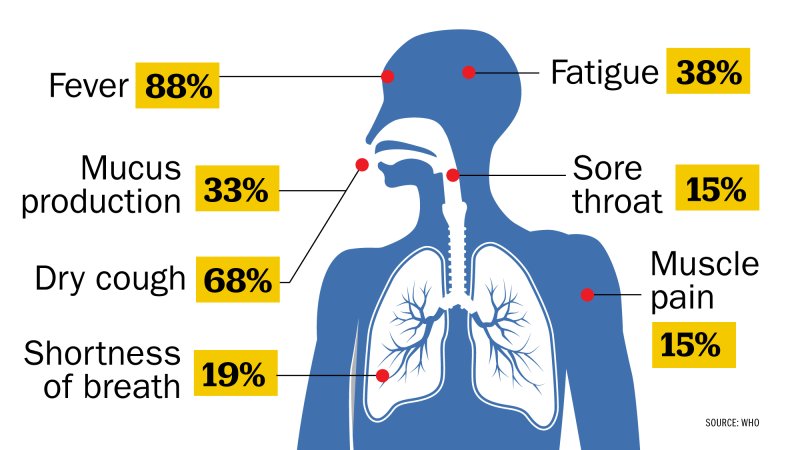WHAT IS COVID-19?!
What is Covid-19?
COVID-19 is the disease caused by the new coronavirus that was first identified in December 2019.COVID-19 could be a disease caused by SARS-CoV-2 that may trigger what doctors call a tract infection. It can affect your upper tract (sinuses, nose, and throat) or lower tract (windpipe and lungs).It spreads the identical way other coronaviruses do, mainly through person-to-person contact. Infections range from mild to deadly.SARS-CoV-2 is one in every of seven sorts of coronavirus, including those that cause severe diseases like Middle East respiratory syndrome (MERS) and sudden acute respiratory syndrome (SARS).
Is there more than one strain of SARS-CoV-2?
A Chinese study of 103 COVID-19 cases found two strains, which they named L and S. The S type is older, but the L type was more common in early stages of the outbreak. They think one may cause more cases of the disease than the opposite, but they’re still acting on what it all means. it's also normal for a virulent disease to vary, or mutate, because it infects people and this virus has done so. There are several variants which are named for the regions they were first discovered but they need now spread to other areas and countries.
An infographic that talks about all the latest SARS-CoV-2 variants that are spreading. Image credit: European Centre for Disease Prevention and ControlHow long will the coronavirus last?
There's no way to tell how long the pandemic will continue. There are many factors, including researchers’ work to find out more about the virus, their seek for a treatment, the success of the vaccines, and also the public’s efforts to slow the spread.
What is the incubation period for COVID-19?
It appears that symptoms are revelation in people within 14 days of exposure to the virus.
How is COVID-19 diagnosed?
How is COVID-19 treated?
As of now, there's not a particular treatment for the virus. those that become sick from COVID-19 should be treated with supportive measures: those who relieve symptoms. For severe cases, there could also be additional options for treatment, including research drugs and therapeutics.
There are now several vaccines that are in use. The primary mass vaccination programme started in early December 2020 and as of and as of 15 February 2021, 175.3 million vaccine doses are administered. a minimum of 7 different vaccines (3 platforms) are administered.
Currently, there's no evidence that the other vaccines, except those specifically designed for the SARS-Cov-2 virus, will protect against COVID-19.
However, scientists are studying whether some existing vaccines – like the Bacille Calmette-Guérin (BCG) vaccine, which is employed to stop tuberculosis – also are effective for COVID-19. WHO will evaluate evidence from these studies when available.
How can you help stop the spread of the coronavirus?
Social distancing or physical distancing, holding room when you have to go out between yourself and others
Quarantine, if they may have been exposed to the virus, holding someone home and separated from other people
Isolation, holding ill people apart from safe people, including, if possible, using a separate "sick" bedroom and toilet.
Who is most at risk for getting COVID-19?
People who live in or have recently travelled to an area where active spread is still present.
People who have had close contact with a person who has a COVID-19 virus that is laboratory-confirmed or suspected. Over the course of a 24-hour span, close contact is described as being within six feet of an infected person for a total of 15 minutes or more.
People over 60 with pre-existing medical conditions.
What are the symptoms of the novel coronavirus (COVID-19) infection?
Fever or chills.
Cough.
Shortness of breath or difficulty breathing.
Tiredness.
Muscle or body aches.
Headaches.
New loss of taste or smell.
Sore throat.
Congestion or runny nose.
Nausea or vomiting.
Diarrhea.
There are possible additional signs.
After exposure to the virus, symptoms may occur between two and 14 days. Children have symptoms that are identical, but typically milder than adults. COVID-19 presents a greater risk of severe complications in older adults and those with serious underlying medical conditions such as heart or lung disease or diabetes.
10. Call 911 and get immediate medical attention if you have these warning signs:
Trouble breathing.
Persistent pain or pressure in your chest.
New confusion.
Inability to arouse (wake up from sleep).
Bluish lips or face.
*Not all potential signs are included in this list. If you are worried about the coronavirus,
other signs or other serious symptoms, contact your healthcare provider*









Comments
Post a Comment